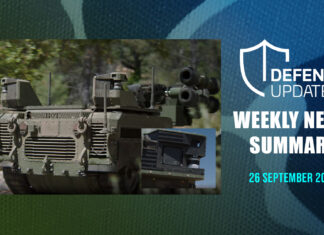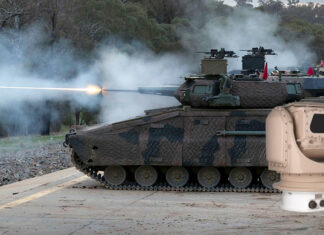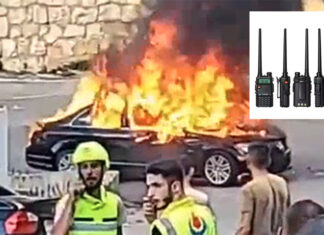The urban environment creates many unique difficulties for modern military operations. Communications become limited and unreliable due to multi-path reflections from walls, and electromagnetic masking by thick concrete and steel structures. These effects cause degradation in the Quality Of Service (QOS) for both voice and data networks, even at very short ranges. In addition to multi-path effects, multiple networks and large numbers of wireless devices operating over a wide frequency spectrum and in a confined area, cause severe interference. GPS coverage is often limited to open areas, resulting in lack of coordination between forces and insufficient situational awareness, especially for operations in densely populated areas.
Furthermore, since urban guerillas are usually “non-uniformed,” and often operate with non-combatants as human shields, hostile actions can occur anywhere, from any direction, and without warning. Serious incidents can develop due to mutual suspicion and poor communications, causing loss of innocent lives. Controlling troops in such an environment requires extraordinary command skills, and constant situational awareness even for experienced combat leaders, and especially at the junior tactical command levels, for operations ranging from routine patrols and road-blocks to non-tactical movements and supply convoys. Without reliable communications, though, even the best leader will find that controlling urban operations is extremely difficult
In support of urban operations, Command, Control, and Communications (C3) can involve the use of many different systems, from satellite links, wireless networks, and data-links to short-range, low power communicators. Broadband wireless networks provide the framework for net-enabled operations, allowing dissemination of a Common Operations Picture (COP) among all participating forces. Combat Net Radio (CNR) sets, now increasingly integrated into current combat vehicles, already support integrated voice and data communications, facilitating direct links to databases and automatic reporting to battalion, brigade and division levels.
Maintaining effective Command and Control in urban combat requires the use of efficient and effective networks supporting all combatants throughout the area, regardless of their location. These capabilities are not easily provided because electromagnetic propagation is severely degraded in such cluttered terrain, frequently limiting communications to short range, or even line of sight. Communications between neighboring forces, sometimes even on parallel roads, can be limited and sporadically scattered. Significant improvement in coverage can be gained by operating relay stations from airborne platforms or on high ground. Maturing aerostat technology, including miniature, man-portable systems, has established these simple and reliable platforms as effective providers of communications relay services. An aerostat is more reliable than a UAV, especially under adverse weather conditions when a UAV cannot operate. Anchored to the ground, an aerostat maintains its position for long periods without requiring human control or support.
Ground combat communications networks are usually operated in the VHF frequency band. This frequency band is relatively narrow and military radio networks do not use the available bandwidth as efficiently as current commercial systems. Consequent lack of available frequencies can limit the use of radio relays to overcome masking and interference.
One solution to the problem is the use of Commercial Off The Shelf (COTS) based communications systems. Unlike legacy military radios or even the newer frequency hoppers which require dedicated frequency resources for each network, COTS systems dynamically share a wide frequency band for optimal use of scarce resources. Employing the TETRA, TETRAPOL, or APCO-25 commercial standards, COTS systems are designed to provide deployable, reliable, and secure communications even under peak loads.
Mobile subscriber networks, such as the TETRA based emergency communications network fielded by Motorola Communications, provide automatic relaying of communications and data. Emergency communications networks utilize ad-hoc communications to establish bypasses between two points when direct communications are not possible. The network automatically establishes paths through other elements to regain the flow of information between all points and the central command post.
Modern military networks are following a similar pattern. These include relatively simple wireless networks utilizing “wi-fi” protocols, as well as advanced mesh networks, which utilize advanced methods designed specifically to cope with the adverse effects of urban terrain. Operating multiple high capacity links supporting video transmissions and control of remote systems requires the fielding of special data-links. Relying on industry standards, such as the commercial COFDM protocol, which was originally developed to support mass distribution of digital broadcasts; modern data-links are designed to deliver compressed video and command signals with very low latency and high quality.
At the lower tactical level, Personal Role Radio communicators (PRR) are used to link squad members. Only Special Operations forces previously used this type of communication system. The use of such communicators enables more effective control of all personnel due to constant reporting and tracking of troops and automatic transmission of emergency calls (by pressing the “panic button”). These devices enable the flow of information to and from the dismounted unit without dependence on a vehicular platform for Command and Control. PRRs can interface with weapon sights, hand held computers, and navigation equipment to form an integrated combat suite for the warfighter. While PRRs are very effective when operations are conducted in open areas, their coverage and range degrades dramatically in confined spaces. Most systems can only work through one or two floors or walls, therefore limiting communications when operating inside buildings, or subterranean passages.
Additional parts of this article:
- The Challenges of Command and Control in Urban Operations
- The urban electromagnetic environment
- Information Warfare in urban Combat
- Effects Based Operations (EBO) in urban Combat
- Situational Assessment (SA) in urban Combat
- Backing the Vigilant Eyes ISR Networking for Urban Combat
- Accelerating the kill chain Closing the Sensor-to-shooter Cycle



















